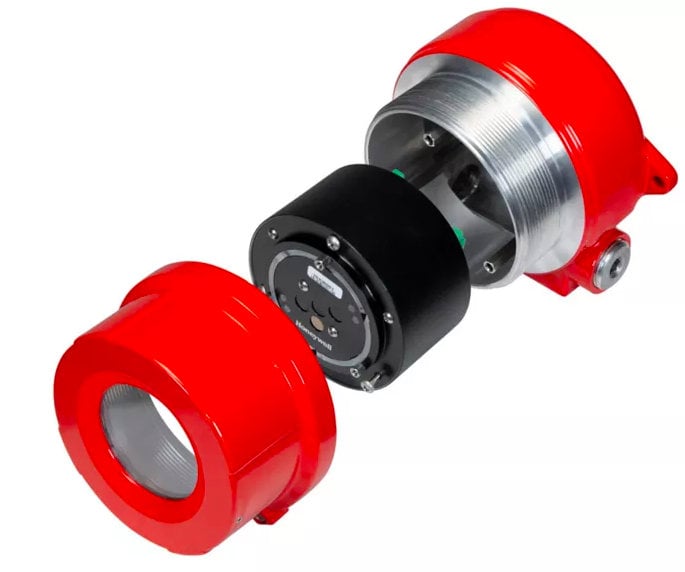www.industryemea.com
06
'23
Written on Modified on
HONEYWELL AIDS IN THE ALTERNATIVE FUEL TRANSITION THROUGH SAFETY TECHNOLOGIES
The latest infrared-based flame detector helps make industrial facilities producing hydrogen safer.

Honeywell recently announced a new infrared-based (IR) technology that quickly and reliably detects hydrogen flames – before they grow into major fires.
Honeywell’s FS24X Plus Flame Detector helps protect workers and facilities from risks associated with hydrogen production and use. Hydrogen is highly flammable, colourless, odourless and 14 times lighter than air. There is no known odorant that can be added to hydrogen that is light enough to “travel” along with it, which makes a leak imperceptible to the human senses.
Hydrogen fuel cells, which generate electricity, heat and water, can be used to provide power to homes and other buildings as well as electric vehicles. The Energy Transitions Commission projects hydrogen will be the source of 13% of final energy demand in 2050 and reach a market value of $2.5 trillion or more.
This is incredibly promising for the future of clean energy as hydrogen can be produced from diverse domestic resources and has the potential for near-zero greenhouse gas (GHG) emissions. When hydrogen is burned in a fuel cell, the primary byproduct is water vapour.
Flame and gas detectors—particularly those like the FS24X Plus that can detect flames even in rainy, foggy or smoky conditions—are important components of a comprehensive safety program for industrial facilities using hydrogen. Today, hydrogen is critical to our infrastructure, from oil refineries and power plants to chemical production facilities making ammonia and fertilizer. As a byproduct, hydrogen can also be found in data centres, battery production plants and wastewater facilities.

Learn more about Honeywell’s innovations in gas and flame detection across key industries.
www.honeywell.com

